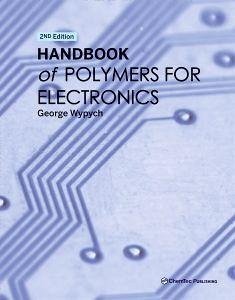
Handbook of Polymers for Electronics
Versandkostenfrei!
Erscheint vorauss. 1. März 2026
379,99 €
inkl. MwSt.
Polymers used in electronics and electrical engineering are essential to the development of high-tech products, with applications in space, aviation, health, automotive, communication, energy harvesting and storage, light-emitting and sensing, flexible electronics, robotic systems, analytical sensors, consumer products, and more. Conductivity is the first feature that comes to mind with these polymers, but they are currently much more complex, having shape-memory, piezoelectric, ferroelectric, and many other properties. Typical features of mainstream polymers, such as mechanical performance, o...
Polymers used in electronics and electrical engineering are essential to the development of high-tech products, with applications in space, aviation, health, automotive, communication, energy harvesting and storage, light-emitting and sensing, flexible electronics, robotic systems, analytical sensors, consumer products, and more. Conductivity is the first feature that comes to mind with these polymers, but they are currently much more complex, having shape-memory, piezoelectric, ferroelectric, and many other properties. Typical features of mainstream polymers, such as mechanical performance, optical behavior, and environmental stability, are required by polymers used in electronics, but frequently they must be enhanced to perform in these demanding applications. In many applications, the properties of typical polymers (usually included in popular handbooks) are not sufficient, creating the need to develop special grades or simply use completely new chemistry for their synthesis. Similarly, the typical set of properties included in the description of the mainstream polymer is not sufficient for polymer selection for these applications as they require different data, data that is meticulously detailed in the Handbook of Polymers for Electronics. The book provides readers with the most up-to-date information from the existing literature, manufacturing data, and patent filings. Presenting data for all polymers based on a consistent pattern of arrangement, the book provides details organized into the following sections: General; history; synthesis; structure; commercial polymers; physical properties; electrical properties; mechanical properties; chemical resistance; flammability; weather stability; thermal stability; biodegradation; toxicity; environmental impact; processing; blends; analysis. The contents, scope, treatment and novelty of the data makes this book an essential resource for anyone working with polymeric materials used in modern electronic applications.













